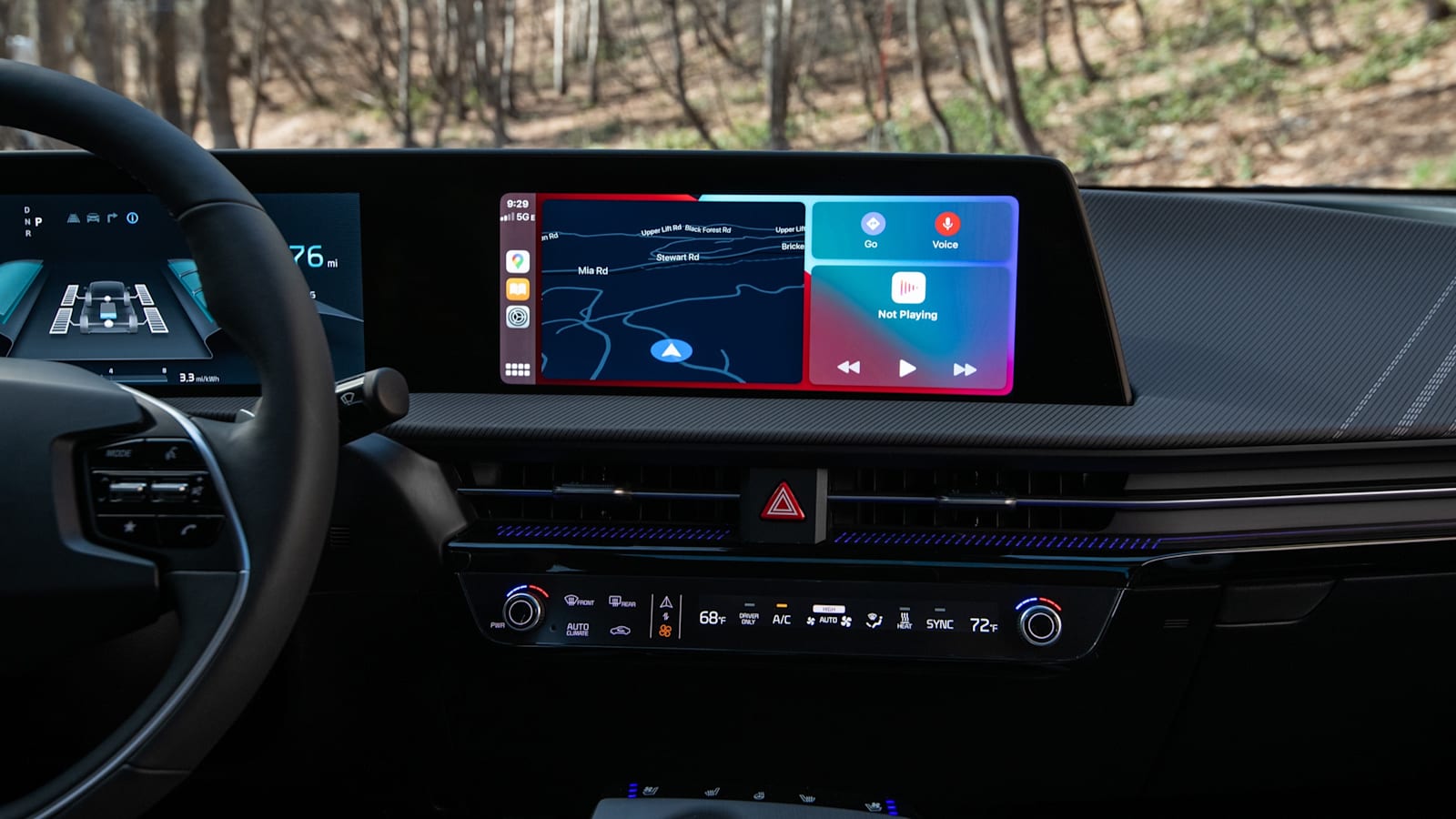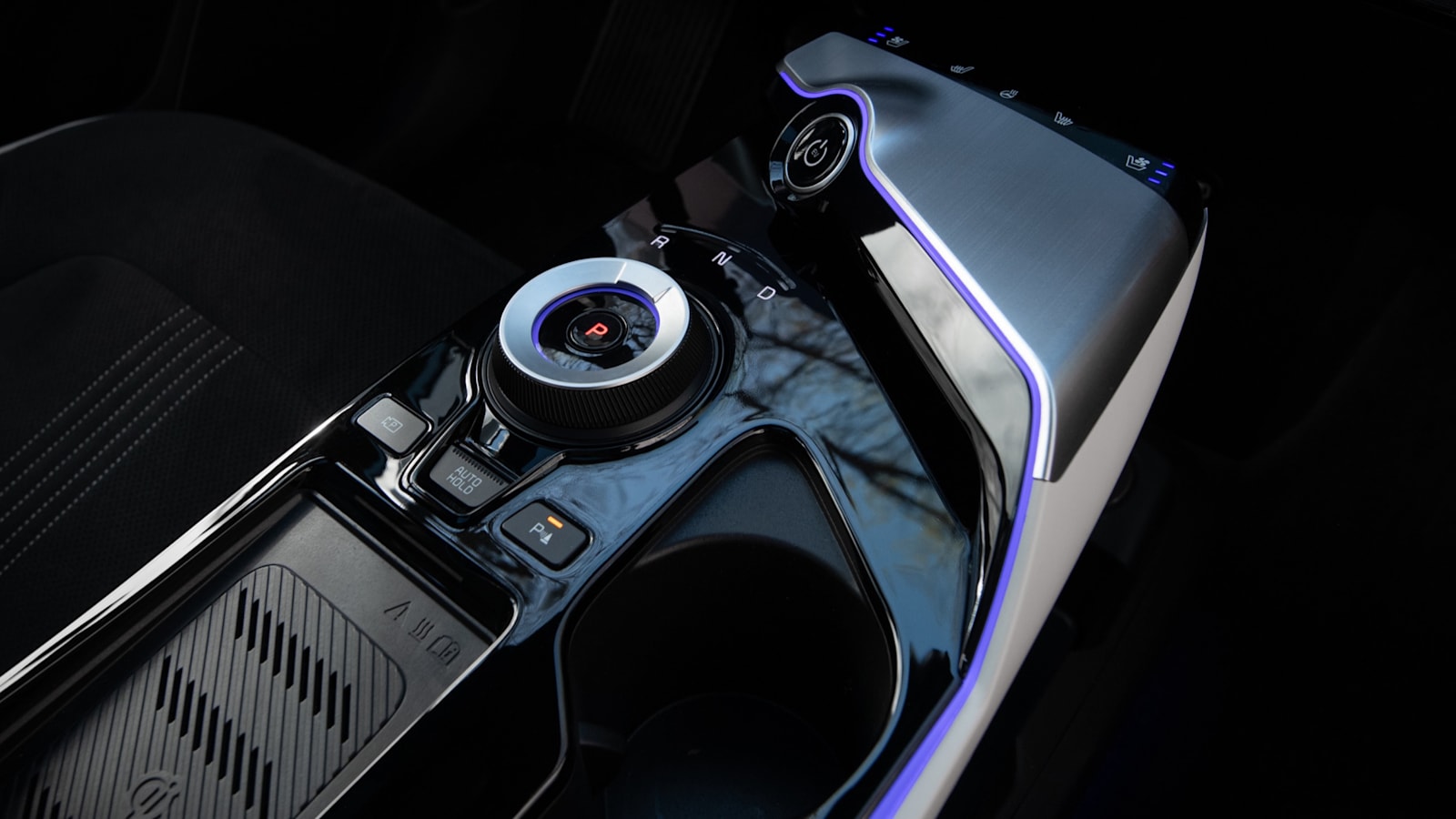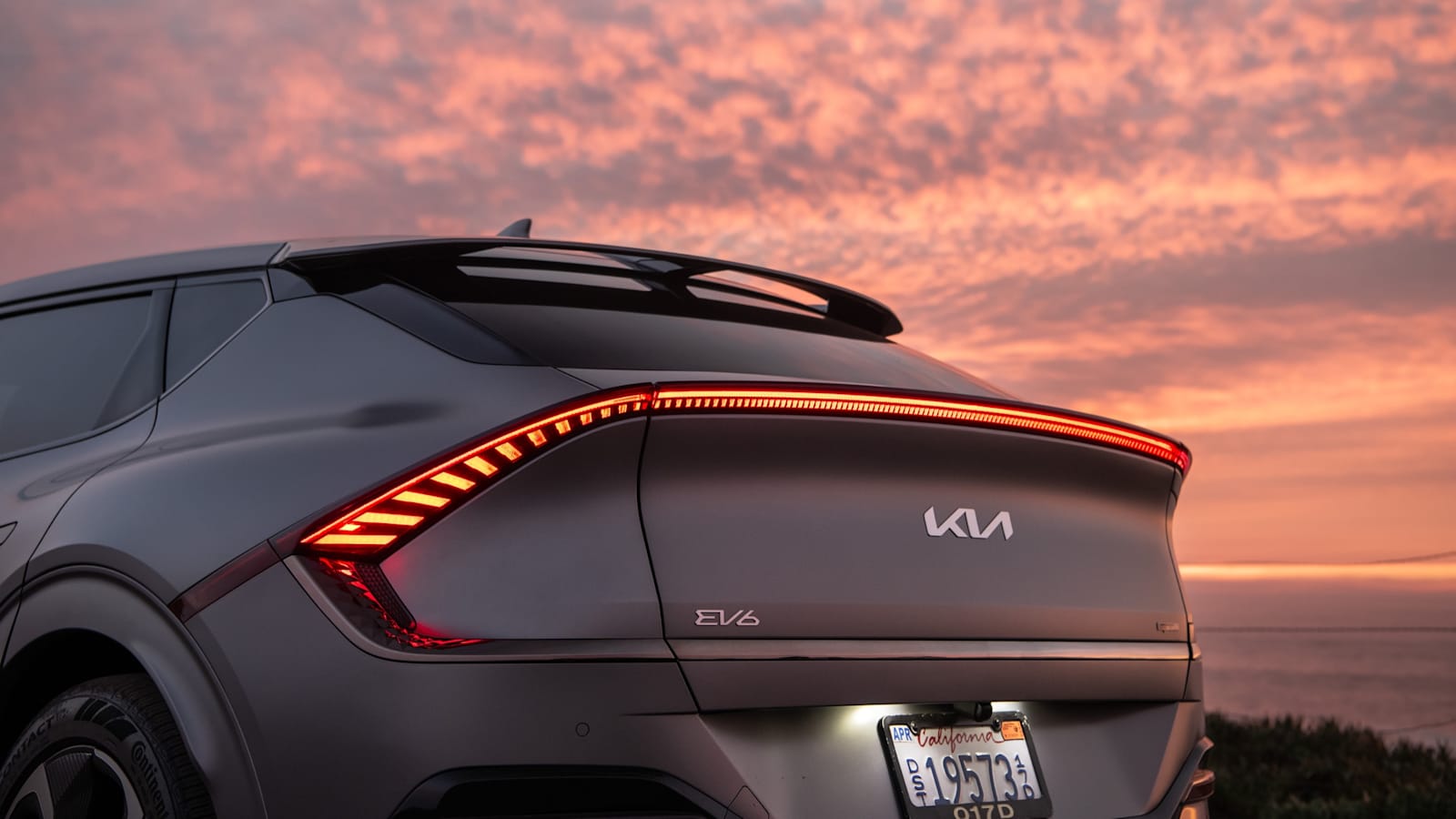2022 Kia EV6 First Drive Review | Sets the electric SUV bar even higher

HEALDSBURG, Calif. — It would be difficult, even disingenuous, to write about the 2022 Kia EV6 without mentioning the 2022 Hyundai Ioniq 5. As such, we won’t even try to avoid it. They use the same underpinnings, Hyundai Group’s Electric Global Modular Platform (E-GMP), which, as we found with the Ioniq, is a strong foundation for an efficient, capable, long-range and (perhaps most importantly) wholly entertaining electric car. The two EVs share a lot of the same infotainment and safety technology as well, which we’ll dive into later. With the bar already set quite high by its Hyundai cousin, our expectations were high as we traveled to California’s Sonoma wine country for our first drive in the Kia EV6.
The most noticeable difference between the EV6 and Ioniq 5 is, of course, the appearance. While the Hyundai has hatchback-adjacent proportions and the kind of futuristic vibe that could have been conceived of by the “Robocop” production designer, the Kia looks more like a traditional if sporty compact crossover. It appears rather small in pictures, but in person, you can better appreciate that the EV6 has the same 114.2-inch wheelbase as the Kia Telluride three-row SUV. Interestingly, the Ioniq 5’s is nearly 4 inches longer than that even though its overall length is nearly 2 inches less than the EV6.
So what does that mean for interior space? The EV6 is roomy, with 103 cubic feet of passenger space, which is similar to the Ioniq 5’s cavernous 106.5 cubes. The EV6 boasts 24.4 cubic feet of cargo space behind the rear seats, and 50.2 cubes with the rear seats folded — less than the Hyundai’s 27.2/59.3-cubic-foot cargo capacity.
The interior design further differentiates these two vehicles. While the Ioniq 5 feels open, airy and lounge-like, the Kia EV6 feels more conventional, albeit sporty and focused. The plastic pieces in our testers had interesting patterns. Vegan leather upholstery is the standard in all but the Light (which gets cloth seating surfaces), but both of our testers had the GT-Line’s optional microfiber suede seats, which were both comfortable and stylish, with black perforated suede trimmed with white leather.


One piece of weirdness is the unique, dual-purpose control touch bar at the bottom of the center stack that controls either the audio and climate systems. In audio mode, the touch bar has shortcut buttons for various infotainment menus and track seeking. To the left of that are physical buttons for front and rear defrost, air recirculation and auto climate control. The left and right knobs control volume and tuning/track seeking, respectively. Finally, amongst it all is a button that switches the entire touch bar to climate controls. In this mode, the knobs control the dual-zone temperatures, while the audio buttons transform into controls for heat, A/C, driver-only or temperature sync modes, as well as fan speeds. If you don’t know where to look, you might have trouble discovering these climate controls, and the touch button that switches between the two modes should be bigger with symbols that make it more obvious what the button actually does.
The EV6 is offered with two battery options, rear-wheel or all-wheel drive, and three trim levels. The most affordable model is the Light trim with RWD and the 58-kilowatt-hour battery. At $42,115 after destination but before any incentives (like the $7,500 federal tax credit), that’s good for 232 miles of driving range, with 167 horsepower, 258 pound-feet of torque and a 0-60 time of 8.0 seconds.
Moving up to the Wind trim gets you the same 77.4-kWh battery as the rest of the lineup. In RWD ($48,215) it offers 225 horsepower, 258 pound-feet of torque and a 0-60 time of 7.2 seconds, as well as 310 miles of driving range. The Wind AWD ($52,115) gets an additional motor up front for a total of 320 horsepower, 446 pound-feet of torque, a 0-60 sprint of 5.1 seconds. AWD sacrifices some driving range, though, at 274 miles.
The GT-Line RWD ($52,415) and AWD ($57,115) have the same performance and efficiency specs as the Wind, but adds features like auto-pop-out door handles, a sunroof, remote smart parking assist, the augmented blind-spot warning system that won our 2020 Technology of the Year Award, and the more advanced Highway Driveway Assist II suite of driver assistance tech that includes cruise control machine learning, automatic lane changing and evasive steering assist.




Regardless of the version you choose, every EV6 has the same 800-volt battery architecture that allows for ultra-fast DC charging, capable of filling the battery from 10% to 80% in just 18 minutes at a 350-kW charger. They all have the same MacPherson front and five-link rear suspension, dual 12.3-inch curved displays, a wireless phone charger and heated front seats. All but the Light trim get vehicle-to-load capability, which allows you to power appliances with a three-prong plug at either the outlet below the rear seats, or through an adapter at the vehicle’s charging port.
We started our day in the GT-Line RWD in a lively Runway Red (one of nine available exterior paint colors). Creeping away from the paths surrounding the young grapevines and past the main lobby of the Montage Resort, we passed a family checking in to the hotel. Their eyes landed on the red EV6, and the father loudly proclaimed, “Wow!” before he came to his senses and moved out of the way. We pulled out of the resort and onto Sonoma County’s low-lying roads, which wind their way between farm and vineyard with near constant changes in altitude.
Eventually we’d work our way higher into the hills, where locals hurl their ancient pickups through blind curves and snaking paths with the sort of confidence that only comes with years of retracing one’s tire tracks enough to banish thoughts of barreling down a wooded cliff. Here, the EV6 chased those locals like a dog chases a rabbit. The steering feels connected, light and precise enough to confidently transition from one corner to another. It’s a more feelsome car than the Ioniq 5, though not quite as pinned down. The slightly shorter wheelbase made this EV6 just a little bit more willing to rotate, and getting stabby with the accelerator at the right time while exiting a corner gets the tires to spin and the rear to wiggle playfully.
Later, we’d get into a Steel Matte Gray GT-Line AWD. The biggest benefit to the all-wheel-drive version of the EV6, at least on these dry, well-paved California roads, is the added motor’s additional power. The extra 95 horsepower and 188 pound-feet of torque shave 2.1 seconds off the 0-60 time. In practice, this means you need a shorter runway of dotted yellow lane markings to make your move past that box truck that’s been holding you up through the mountains. For all practical matters, we’d be happy to live with the still-quick acceleration of the RWD EV6, but the AWD version lends itself to more straight-line confidence and seat-stuffing giddiness.

While the EV6, regardless of drivetrain, could easily keep up its speed through these mountain roads, we had to work for the rewards. Enter a corner too fast, and the car would begin to plow, until we applied just enough accelerator that the wheels would shove the weight of the vehicle back on course. These corrections came a little easier in the AWD car, with the tug of the front tires helping to realign the vehicle, with less of the unruly behavior at the rear end.
Pulling the left steering wheel paddle summons full regenerative braking force, making slowing for each corner a smoother, more intuitive process than trying to perfectly time when and by how much to lift off the accelerator to engage regenerative braking. The result is smoother driving and cleaner, more fluid corners. You can also turn off such lift-throttle regenerative braking and do it all the old fashioned way with Coast mode. There are four levels of regen available.
When not flogging it through the mountains, the EV6 offers a relaxing drive. Shared with the Ioniq’s 5’s two top trim levels and various Genesis models, the GT-Line’s Highway Driving Assist II system is an excellent adaptive cruise control system with equally adept lane-centering and includes semi-automated lane changes triggered by the turn signal. For the latter, it checks for an opening in traffic and smoothly moves the car into the next lane. The available augmented reality head-up display provides a wealth of useful information at an easy-to-read distance in front of you, including highlighting the car you’re following and providing helpful navigation cues to tell you where and when to turn.
If you’re considering adding an EV to your driveway, it would be hard to do better than the Kia EV6 … or its Hyundai Ioniq 5 cousin. Which you pick is a matter of personal taste, for the most part — and if you’re wondering, we still favor the Hyundai (at least in AWD, as we haven’t driven a RWD Ioniq 5 yet) for its looks, slightly more refined cruising feel, open-feeling cabin, and the fact that the fully loaded price comes in $1,390 less than that of the Kia. The Hyundai also includes three years of free 30-minute charging sessions on the Electrify America network, while the Kia EV6 comes with just 1,000 kWh of free charging on the same network. That would likely work out to fewer than 20 charges from 10-80%.
There is one huge advantage the EV6 has going for it, though: availability. While the Ioniq 5 is initially only available in 18 states, Kia will offer the EV6 in all 50 beginning in a few weeks. In fact, Kia hopes to have an EV6 in every dealership in the country by the time its big TV spot airs during Super Bowl LVI on February 13, 2022. Depending on where they live, that might just be the deciding factor for customer in the market for a fun, fast, high-tech electric crossover.
Related Video:







